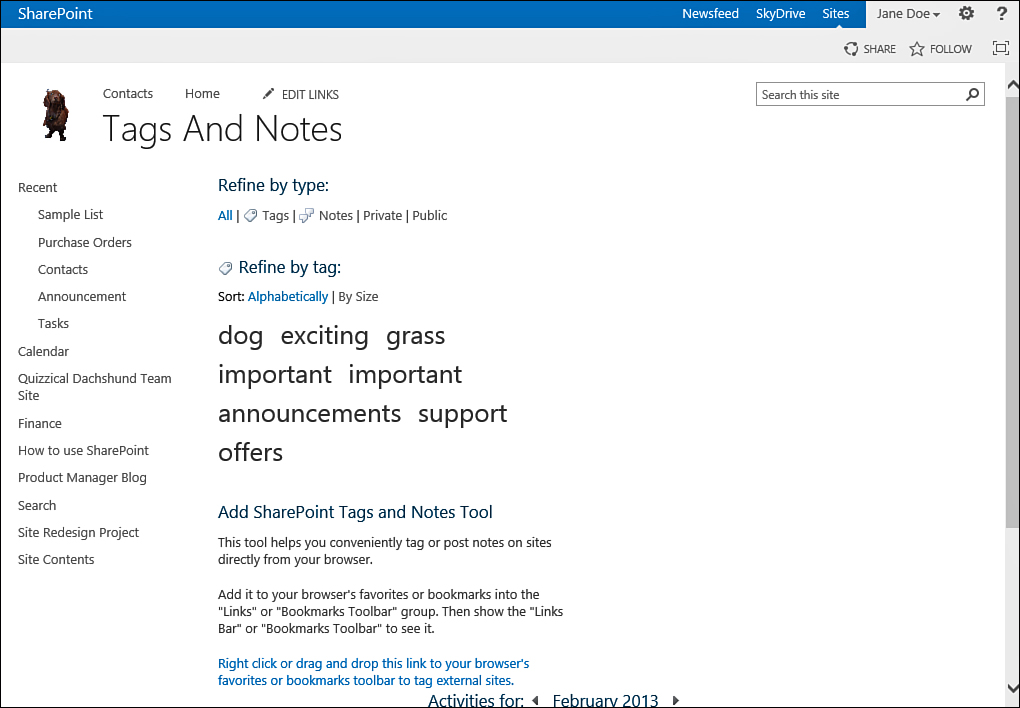Scenario/Problem:
You have added tags on items, documents, and pages. Now you want to
find the items you tagged, change whether they are private or public,
and maybe remove them. Similarly, you have added notes to the items,
and you want to review and manage those notes.
Solution:
SharePoint offers a page that allows you to review your tagged items
and your notes. However, the link to that page is not always shown in
SharePoint pages. To open this page, type /_layouts/15/thoughts.aspx after your site’s address.
This opens the Tags and Notes page, which
lets you find items tagged with specific terms—either by yourself or
other people, as shown in Figure 1.

FIGURE 1 The Tags and Notes page.
At the bottom of the page is a list of
activities (by month). This list shows the items you or other people
tagged with the term you click on under the Refine by Tag section. For
example, clicking on the tag “dog” shows the files or list items or
pages that were tagged with that word, as shown in Figure 2.

FIGURE 2 Selecting a specific tag.
When you find an item
that is tagged or noted, you can click on the link to the item to open
the item, or you can remove the note or the tag (by clicking the Delete
link). You can also click on View Related Activities to open the
tagging dialog for that item to add tags and notes to the file, item,
or page.
Add, Edit, and Remove Notes on the Notes Board
Notes are similar to your status, but unlike
the status, which is supposed to be a short description of what you are
doing, notes can be long. You can use notes to comment on documents,
items, and pages—even on external sites.
The notes board is the place in your personal
site where you can see all the notes you have written and from which
you can easily create more notes that are not related to a specific
item, file, or page.
To view the notes board for an item you
tagged, either go to that item (or file) and click the tags and notes
button. Otherwise, locate the item using the same process you used to
find an item by tag (refer to Figure 2)
but click on the “notes” filter at the top of the page. After you find
an item, click View Related Activities to open that item’s notes board
where you can create a new general note by just typing in the box and
clicking the Post button. The page also includes a list of all the
notes you have created under the new note text box.
To delete a note, click the Delete link next to it. To edit a note, click the Edit link next to it.
Tip
Remember that everyone can see your notes.